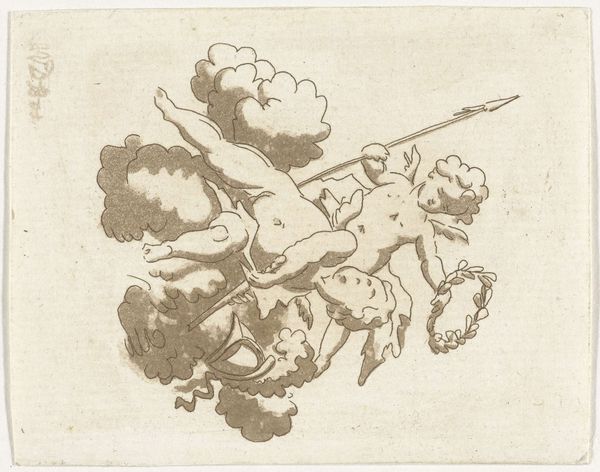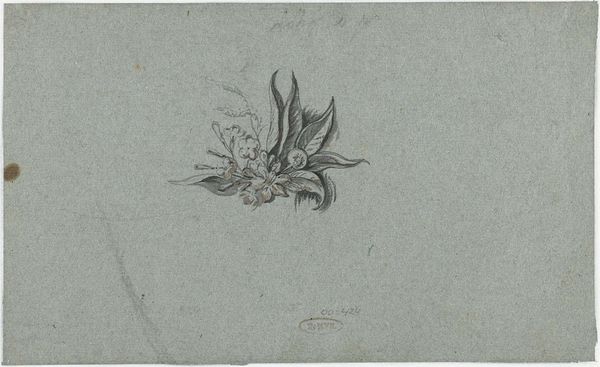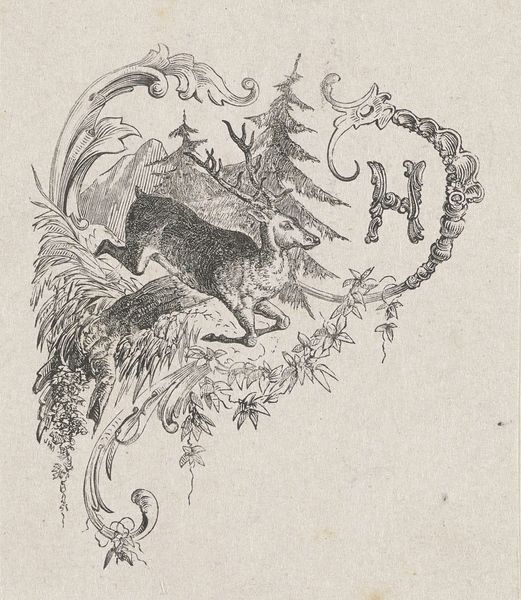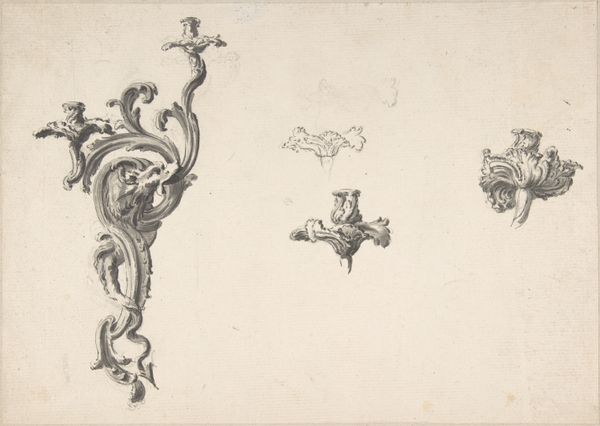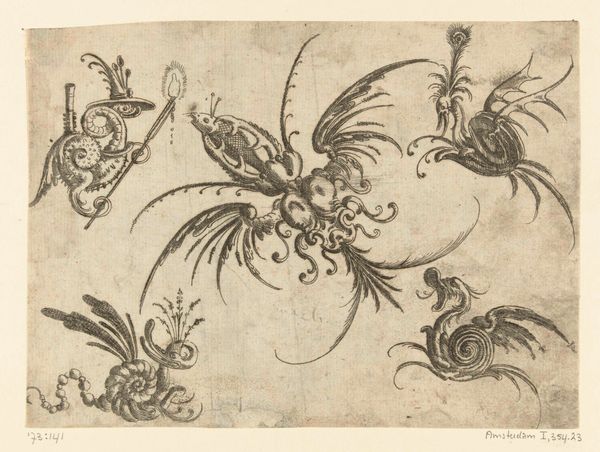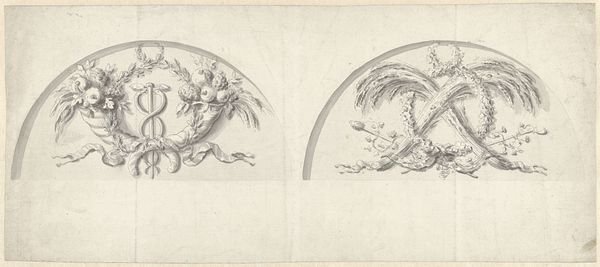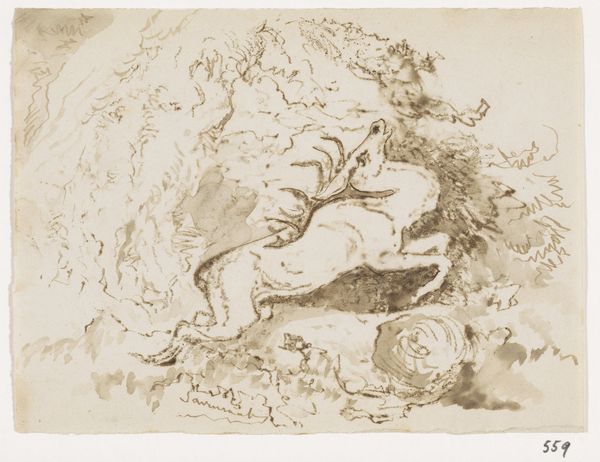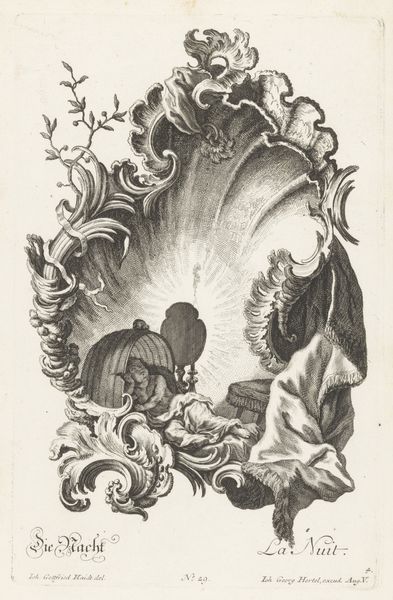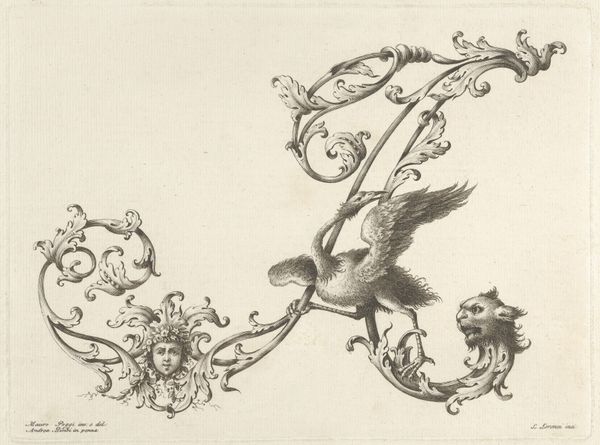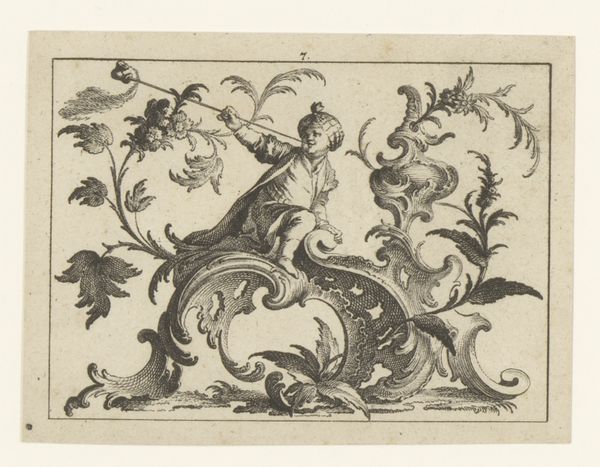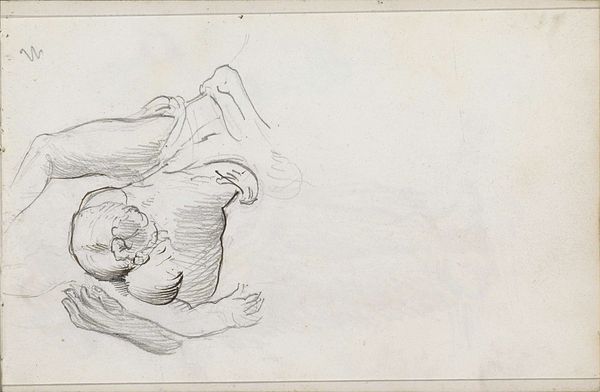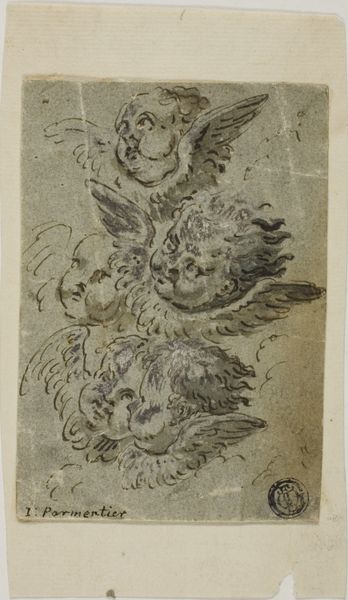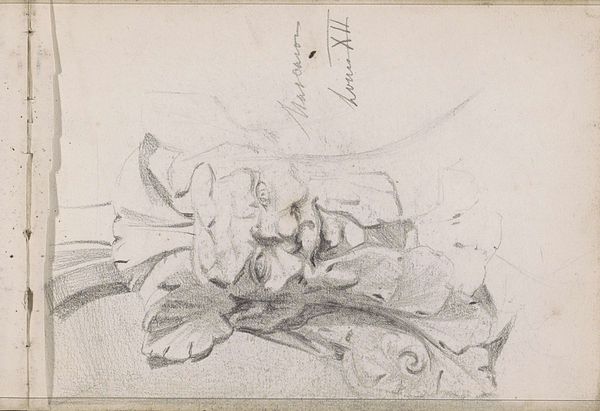
#
aged paper
#
toned paper
#
light pencil work
#
pencil sketch
#
old engraving style
#
personal sketchbook
#
sketchbook drawing
#
pencil work
#
watercolour illustration
#
sketchbook art
Dimensions: height 48 mm, width 67 mm
Copyright: Rijks Museum: Open Domain
Giovanni Cattini created this tiny engraving of three cherubs sometime in the 18th century. At this time, the image of the cherubic angel was ubiquitous in European art. It served as a potent symbol within the Catholic Church, and its frequent deployment speaks to the institution's influence on social and cultural life. The image’s meaning arises from the use of sharp lines to define the figures, each with chubby cheeks and delicate wings. This manner of portrayal was developed during the Renaissance and had become synonymous with innocence and divine favor by the 1700s. The cherubs float on a cloud, further emphasizing their ethereal nature and association with the heavens. Art historians can trace the evolving symbolism of cherubs through church records, theological texts, and artistic treatises of the period. This helps us to understand how cultural values shape the visual language of art, as well as how the politics of imagery reflects society.
Comments
No comments
Be the first to comment and join the conversation on the ultimate creative platform.
